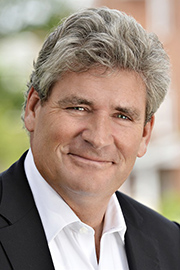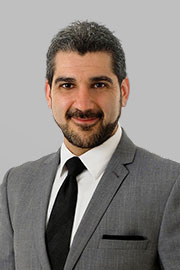- Hear!
- Rabble!
- Aug/23/22 5:30:00 p.m.
- Re: Bill 7
The place where you’re asking them to go is experiencing more pressures than the place that they’re already in, and they’re going to have difficulty delivering care. Why would you do that, at the risk of separating people from their families, from their essential caregivers? Look, there’s no easy answer to that; I’m just saying this is not the answer. The answer is to provide the supports that are necessary in long-term care—
There’s going to be a lot of pressure on those placement coordinators—it’s not easy—and that pressure will be: “Get them out of the hospital. We need you to get them out.”
All I’m trying to say is the value of the lives of those people who are ALC is the same as anyone else, and we have to try and treat it as best we can the same—
- Hear!
- Rabble!
- Aug/23/22 5:30:00 p.m.
- Re: Bill 7
I just want to circle back to what he’s saying. Forget the fact that both opposition parties say that we can’t trust long-term-care coordinators and hospitals to work on the best behalf of the patient. Forget that for a moment, Speaker. He understands, of course, that nobody can be discharged into a long-term-care home that doesn’t have the appropriate staffing, that that is part of this bill and that it is actually part of the Fixing Long-Term Care Act. He does understand that that is actually the case.
So I’m wondering if the member could hearken back to the Fixing Long-Term Care Act and to this part of the bill that is very clear: You cannot be discharged into a home without your consent and into a home that does not have the resources needed to handle the patient who is being transferred.
- Hear!
- Rabble!
- Aug/23/22 5:40:00 p.m.
- Re: Bill 7
So why do you need this bill? Why do you need this bill—
Just withdraw it.
- Hear!
- Rabble!
- Aug/23/22 5:40:00 p.m.
- Re: Bill 7
I want to begin by saying that I would like to share my time with the member from Burlington, later in the speech, of course.
I want to start by thanking the good people of Sault Ste. Marie for giving me the privilege and the honour to represent them once again here in the provincial Parliament of Ontario. It’s my third opportunity to represent my wonderful community, and I was really proud to have this opportunity on June 2, so I really wanted to take that opportunity to say thank you.
I’m going to be taking some time this afternoon to speak about the More Beds, Better Care Act of 2022 and the difference that it is making in my community of Sault Ste. Marie. I’d like to bring that perspective on behalf of my constituents, because I think it’s so important that we can really appreciate how the work we are doing in this House is impacting the lives of individuals across every part of this province, but most notably within the communities we represent. In Sault Ste. Marie and across northern Ontario, and of course throughout all of Ontario, this work is significant. More important than its significance is how important it is to the people of our communities, to the people we love, the people we care for, our seniors.
We are the first government to enshrine this commitment into the legislation with the Fixing Long-Term Care Act.
There are two key components that I would like to speak about here today.
Firstly, the work that we are doing that is proposed within this legislation is going to do so much to improve staffing levels and increase hours of care for every resident per day. This has been going on incrementally since 2021, and it will continue to 2024-25.
I then want to speak about the great strides that are being made regarding the building of modern, safe, comfortable homes for our seniors. A key pillar of the work that we are doing to fix long-term care involves hiring 27,000 new care staff. That is going to increase the quality of care that the people of our great province are receiving. It’s going to allow our government to fulfill our commitment of providing an average of four hours of direct care for every resident for every day.
Last year alone, our government invested $270 million to increase staffing levels by over 4,050 people. This year, we’re looking at investing an additional $673 million into our long-term-care homes so that we can hire—and not only hire, Madam Speaker, but retain an additional 10,000 long-term-care staff across our great province of Ontario. This is part of a $4.9-billion—and of course, that’s billion with a B—investment over the next four years to allow us to reach our commitment of hitting that average of four hours of daily direct care per resident. There has been $100 million dollars invested already, which has increased our nurses in long-term care by 2,000 through to 2024-25 and has supported the training of thousands of PSWs and nurses who wish to advance their careers in the long-term-care sector. Earlier, in the fall economic statement, our government announced that $57.6 million is being invested over the next three years to add an additional 225 nurse practitioners in long-term care.
As I said, Madam Speaker, I want to speak a little bit about my own particular riding of Sault Ste. Marie. Within my hometown, all of this funding amounted to an additional $2.8 million for staffing in 2021-22, and $17.2 million when we look at moving to 2024-25. Some of the specifics we have in my riding: a wonderful long-term-care home, the Ontario Finnish Resthome. That home this year alone received additional funding of $549,000, and $980,000 looking over next year, and by the time we get to 2024-25, we’re talking about over $1.3 million. It didn’t stop there, Madam Speaker. The F.J. Davey Home saw a funding increase of $3.2 million this year, $5.8 million over the next year and over $8.1 million by the time we get to 2024-25. This is a significant investment in long-term care. These large numbers we speak of translate into large numbers within every one of our ridings—every one—so that residents across all of Ontario receive the care and the dignity they deserve.
I want to speak next about a key pillar for our plan to fix long-term care across the province of Ontario and to address the tremendous wait-list that was left behind by the former government, who built a measly 600-plus beds.
Interjection: Wow.
Interjection.
I have seen the fruits of our government’s work in my riding of Sault Ste. Marie. Moreover, the people of Sault Ste. Marie have seen it. I believe that is why they saw fit to send me back to this House on June 2.
The Ontario Finnish Resthome Association was allotted 68 new beds and the redevelopment of another 60 beds. But we didn’t stop there. Extendicare in Sault Ste. Marie saw an allotment of a net new 20 beds and 100 redeveloped beds.
But Madam Speaker, something I’m so proud of: I wanted to ensure that I speak to you in my last moment here about the great work that our community has done, that our government has done, of not having a one-size-fits-all approach, but working with long-term care in a way that is culturally appropriate for the communities we represent, and in partnership with our Indigenous communities.
In March 2021, I was so proud to announce that we received 96 new beds for the Batchewana First Nation long-term-care home.
Then, in April 2022, I was able to join Chief Jason Gauthier of the Missanabie Cree First Nation to announce an additional 192 new beds for Sault Ste. Marie, and I was proud to be able to have a groundbreaking celebration with Minister Mulroney in Sault Ste. Marie for that newly established centre.
In my final seconds, I want to say that we have created 376 new beds, 160 redeveloped beds—all in all, just about as much as the Liberal government created in eight years—and that was in one riding in the province of Ontario, Madam Speaker, something I am very, very proud of.
With that, I will conclude, and I thank you again for the opportunity to address the House.
- Hear!
- Rabble!
- Aug/23/22 5:40:00 p.m.
- Re: Bill 7
Through the Chair, please.
We have no further time for questions. We will now have further debate.
- Hear!
- Rabble!
- Aug/23/22 5:50:00 p.m.
- Re: Bill 7
I’m happy to be here today to speak on this pressing issue. I’m here today to speak on the More Beds, Better Care Act, 2022. This bill amends the Fixing Long-Term Care Act, 2021, by adding provisions for patients who occupy beds in a public hospital and are deemed to be requiring an alternate level of care. This proposed amendment is part of a broader strategy from our government to ensure recovery and stability in the Ontario health system.
Health care has many moving parts—primary care, acute care, long-term care, health care human resources, and, most importantly, the patient—all of which need to work together to deliver the most appropriate care to our most vulnerable in their time of need. When one or more of these parts are misaligned, it puts a strain on the whole system. In normal times, these strains can be tolerated. COVID-19 showed clearly that we have some long-standing issues that can no longer be ignored.
This government has responded with an actionable plan to secure an improved health care system. The Plan to Stay Open: Health System Stability and Recovery outlines five key initiatives to provide the best possible care for Ontarians while keeping the province open and thriving. The More Beds, Better Care Act amendment to the Fixing Long-Term Care Act is one of those specific actions aimed at delivering better care and increasing health care capacity through making the most appropriate use of health care resources.
When a person’s recovery has progressed to the point where they no longer require the specialized services of an acute-care hospital, they are normally discharged to home if they are well enough, or to long-term care if additional assistance is required. Those patients who qualify for discharge but are waiting for their preferred long-term-care residence end up staying in hospital. These patients are characterized as alternate-level-of-care, or ALC, patients.
As mentioned, health care is a system of parts that must work together. An ALC patient is occupying a bed in an acute-care hospital when that bed is needed for incoming patients. This creates backups throughout the system. It is most visible when a patient spends too long in an ER bed waiting for in-patient admission. It is less obvious when a surgery gets cancelled because a recovery bed isn’t available.
Yesterday, in my riding of Burlington, there were 10 in-patient beds that were occupied by ALC patients at Joseph Brant Hospital. Last year at this time, 20 beds were occupied by ALC patients. Those are beds that are not available to patients in the ER or to patients who will need a recovery bed after a surgery.
Speaker, nobody wants to stay in a hospital a moment longer than necessary, but they need a place to go, one that provides quality of life and meets their needs. ALC bed occupancy is not a new problem. Hospitals have been raising this issue for decades.
COVID-19 has brought this problem to a new level. We have two years’ worth of pent-up surgeries, and we need to be prepared for a possible fall surge of new COVID cases. We need the beds available, and we need front-line health care staff focused on the sickest of patients.
Previous governments have ignored the problem and let the situation build. I’m proud to say this government is the first in Ontario to address the problem in a compassionate, proactive and practical manner. These actions are intended to provide more high-quality spaces for our patients. This amendment provides the tools necessary for physicians and staff to have compassionate conversations with ALC patients and their families about transitioning from hospital to a temporary long-term-care home while they wait for a space in their preferred home to become available.
The intent of this amendment is similar to those of other provinces in Canada, such as British Columbia, Alberta and Nova Scotia. We recognize that the decision to transition to temporary long-term-care homes can be a source of anxiety for patients and their families. We want to assure Ontarians that we are doing all we can do to alleviate that anxiety.
Our government has been working with partners, hospitals, long-term care, union leadership and experts to find the best solution. First, we have invested heavily to improve long-term-care homes in the province of Ontario. Our government is moving quickly on our commitment to build 30,000 new long-term-care beds and to redevelop thousands more across the province. We invested a total of $6.4 billion into the development of new homes and beds, and have 31,705 new and 28,648 upgraded beds in the pipeline. The commitment to build 30,000 new long-term-care beds in the province is the largest long-term-care building program in Canada, ever.
In my riding, 64 new beds are being added to the CAMA Woodlands Long Term Care Home. In Maple Villa Long Term Care Centre, 195 new beds are being added and another 93 beds are being redeveloped.
We have reinvested in more direct care. Before the government’s investments to increase direct care, patients were getti1ng 2.75 hours a day of direct care from registered nurses, registered practical nurses and personal support workers. Our government is investing $4.9 billion over four years to reach our commitment of an average of four hours of daily direct care per resident.
In Burlington alone, in my riding, we will receive more than $46 million in four-hour-care funding over the next four yea1rs and an additional 259 new beds and 93 redeveloped beds.
We are also training new PSWs for these homes. The Ministry o1f Colleges and Universities is working closely with the Ministries of Long-Term Care, Health and Education to bulk up the PSW workforce by addressing recruitment, retention and training initiatives. This ensures that PSWs are available to meet resident needs.
As part of the plan to stay open and based on the advice of the Office of the Chief Medical Officer of Health, we are right-sizing the number of isolation beds based on community demand and COVID-19 risk levels. There will be 300 long-term-care beds that will now be safely available for use, and the potential for 1,000 more beds in the next six months.
Second, patients do not need to worry that accepting a temporary placement in one home will cause them to lose their place in line for their preferred residence. We will work with our front-line partners on placement guidelines that will ensure patients stay close to their loved ones and that no one is out of pocket for any cost difference between their temporary home placement and the cost of their preferred home.
Third, this amendment includes provisions that temporary placements will have the skills and the facilities—
- Hear!
- Rabble!
- Aug/23/22 5:50:00 p.m.
- Re: Bill 7
I recognize the member from Burlington.
Second reading debate deemed adjourned.
The House adjourned at 1800.
- Hear!
- Rabble!






